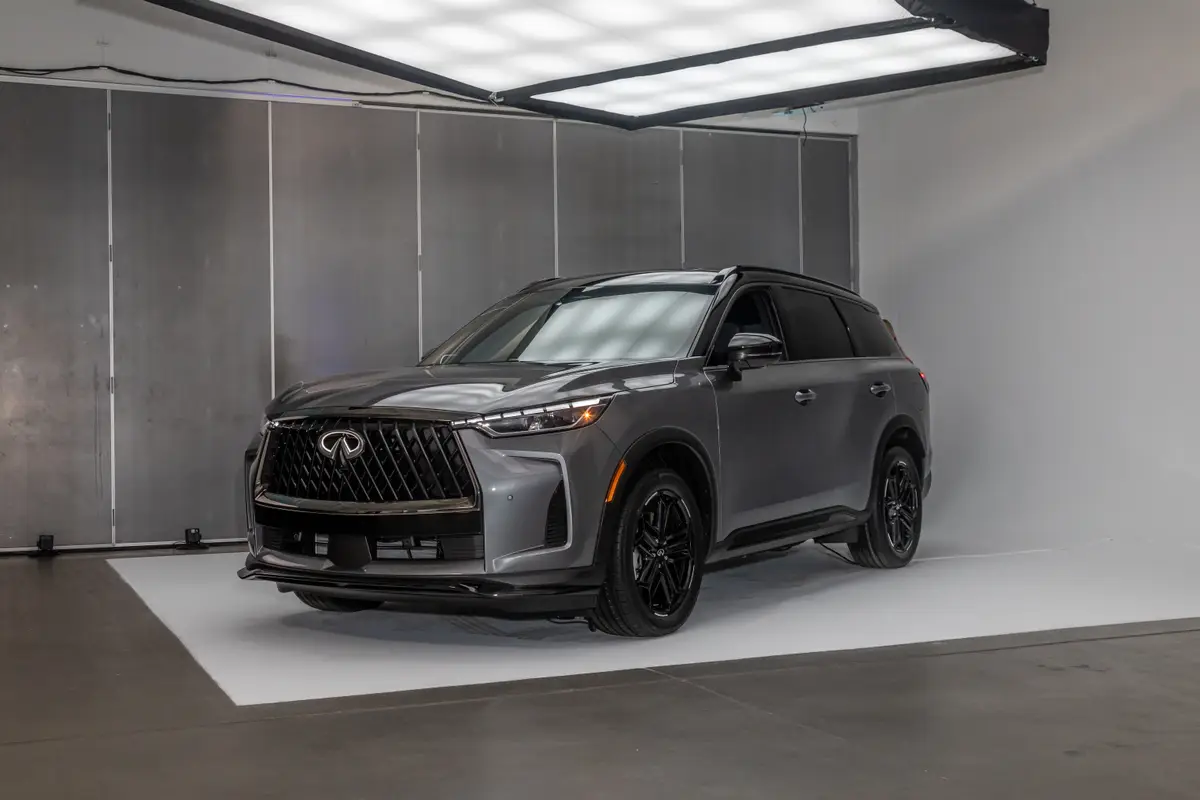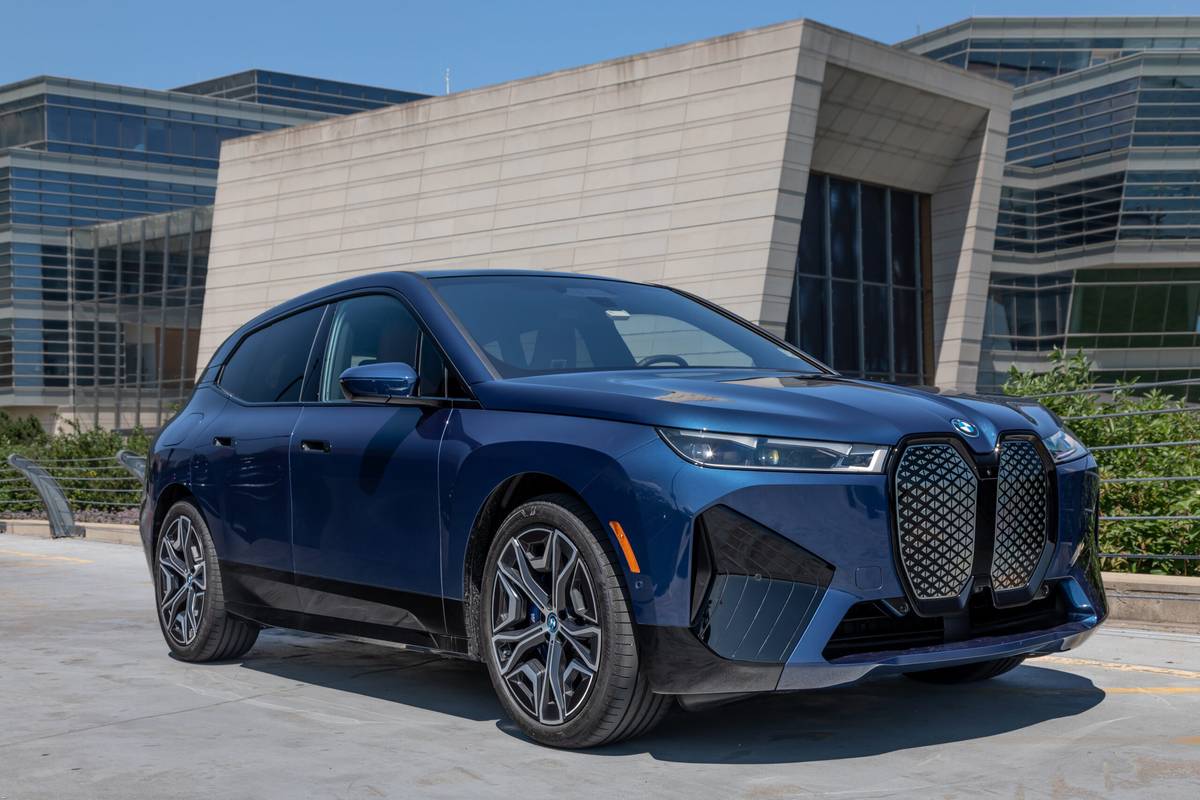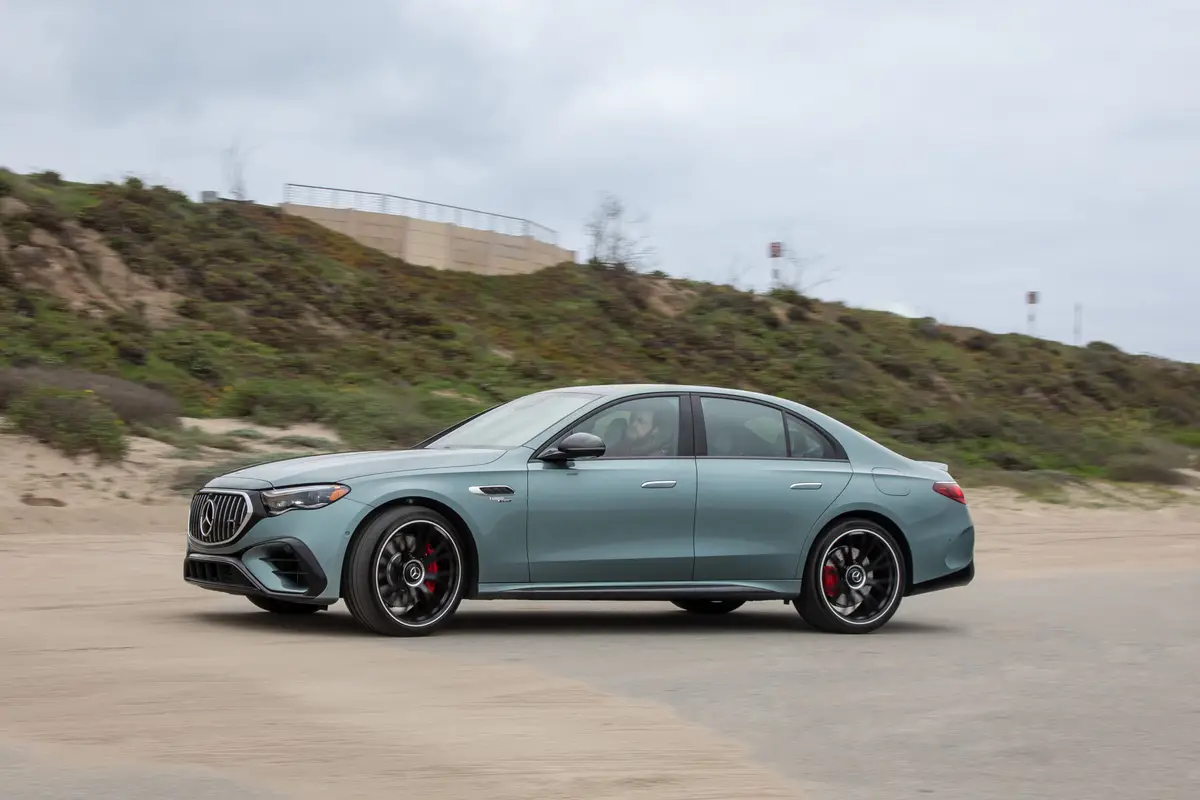Boston.com's view
Say the words: “entry-level Mercedes-Benz.”
Feels like saying, “Nantucket waterfront starter home,” huh?
Well, Mercedes, with its sights set squarely on BMW, Audi, Lexus, and Volvo, has upped its own ante in the entry-level/luxury class.
The new 2001 C-Class – starting at around $30,000 and climbing over $40,000 – is a big leap for the low end of the German automaker’s lineup. C-Class roots reach back to around 1983 and the 190. Baby Benzes abounded and, frankly, did not carry with them the cache of the bigger, more expensive models.
Even when the C-Class first appeared a decade later, the Baby Benz moniker stuck. Much like 914s weren’t “really” Porsches, the smaller C-Class Benzes were regarded in some quarters as cars for wannabes. Like the folks today who drive Japanese motorcycles fitted out to look and sound like Harley-Davidsons. “Hey, when you gonna get a real bike?” is the disparaging question often mouthed out loud.
Of course, big Benz owners were quiet in their superiority, but a titter here, a tatter there, and strata got defined.
There’ll be no tittering or tattering over the new C-Class, however. With generous hand-me-downs (another unBenzlike phrase, that) from the S, CL, and CLK classes sprinkled throughout its interior, suspension, and drivetrain, this new C-Class is one very nice, refined, and roomy automobile. No Baby Benz wails from this car.
It even looks like its much more expensive offspring. Its sloping, aerodynamic hood and grille are capped with the same brooding-eye Xenon headlights you find on the more expensive models. Inside, it’s got real wood appointments, leather, and big black dials with white numbers.
The C-Class comes in two versions: C240 and C320. I tested the C320, though I really want to get into the true entry-level C240 to see what we get at the lower end of the chain. Mercedes promises to accommodate.
The big difference between the two is their engines. Both V-6 powerplants, the C240 engine delivers 168 horsepower to the C320 215. I drove the C320 for a week and got just over 22 miles per gallon – respectable mileage for a full-blown and powerful sedan.
The interior is familiar Mercedes, and roomier than earlier small Benzes. You could be in the S-Class or the C-Class and much would look the same. Same sloping view over the hood, same set of gauges behind the wheel, basically the same set of (slightly confusing) batch of audio and climate controls built into the center of the dash and down onto the console.
But interiors are not hard to replicate from one model to the next – even while keeping costs down somewhat. The significant replication in the C-Class comes in the areas that really function, areas that make its more expensive stable mates such fine automobiles.
Handed down (there’s that phrase again) from the more luxurious classes are a cockpit management system that includes audio, telephone, and navigation systems; safety equipment that i ncludes front and side air bags and side curtains, electronic stability control, and ABS (with brake assist that adds power to braking in real emergencies); and creature comforts from dual-zone climate with rear controls to multi-adjustment leather seats.
The ride, of course, is firmly Mercedes. Firm from seat bottoms to handling.
Pull out to pass on the highway, and the C-Class gives a subtle burble as it climbs a delicious torque band on its way to higher speeds. Make a quick lane change and there’s no sense of body roll. It’s the same in sharp corners.
Stomp the brakes at high speed and your seat belt tightens just so, yet you get no sense of nose-dive as it comes to a straight, controlled stop.
This all owes to more hand-me-downs, refined for this year, that make up a suspension of multilinks, struts, coil springs, twin tube gas shocks, and stabilizer bars. It’s a great match for the power train.
A couple of notable traits in this V-6/5-speed automatic powertra : It felt almost like there were two torque bands, both powerful, at play here. In acceleration, a steady but moderate climb sent it moving forward. But when I topped 3,000 rpms, I said, “Whoa, what’s this?” because the torque, while steady, felt somehow even more powerful and the car hurtled forward once again.
And the automatic transmission, as well, seemed to have a dual personality. In normal acceleration and driving, it shifted like any other automatic: conservatively. But when I punched the gas to pass, or gave the car gas on steep hills, it held off on shifting, letting the horses run and the car gain speed. I seldom felt the need to use the click-right, click-left “manual” shift option.
Finally, Mercedes has filled this car with safety features, from the thin layer of foam in the bumpers that start protection in very low speed bumps, through a system of energy-absorbing modules, crash boxes, side members, sectional panels above the wheel wells, and even a firewall meant to dissipate the effects of a crash. Inside, air bags and air curtains are everywhere, as are smart seat belts.
And after you have survived the crash, there is no need to call for help. The deployment of the air bag will have been noted by Mercedes monitors and the nearest aid will already have been called.
Nice touch:
I’ll go back to that transmission again. Wonderful dual personality for an automatic.
Annoyance:
How about the transmission again? If Mercedes is aiming this car at younger, more aggressive drivers, why not give them the option of the 6-speed manual you can get in the C240?
Latest news



